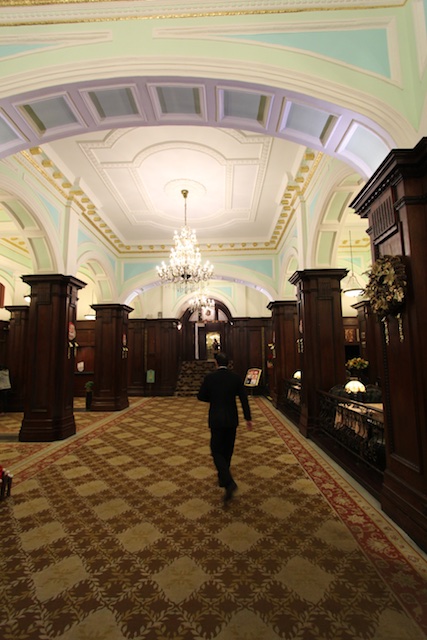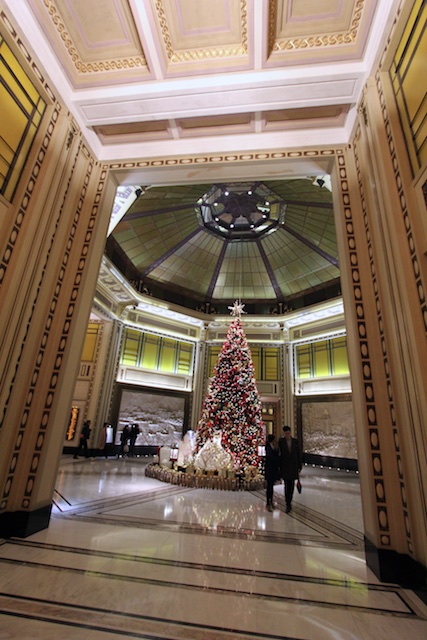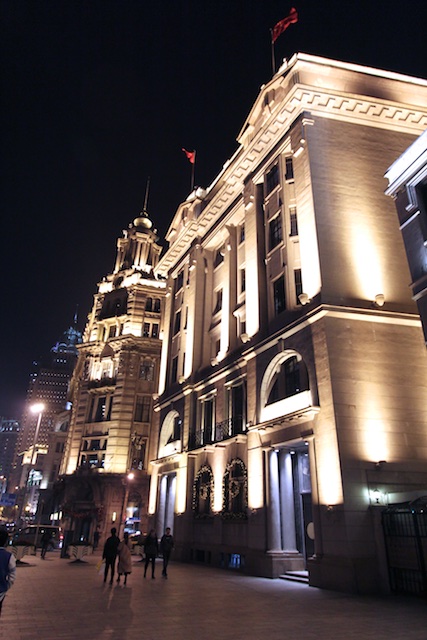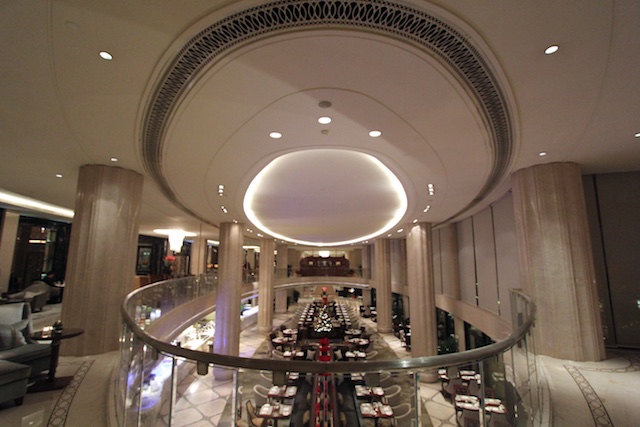Last night I led my final night tour of the Bund for the year 2017, and possibly the last tour involving the Astor House. As usual, my tour was organized by the Shanghai Flaneur company, which I highly recommend to people looking for a more substantial tour of the city's historic and contemporary cultures. The Astor House is rumored to be closing down for a major renovation after which it will become a museum for the Stock Exchange. I have no idea what sort of internal changes will be made, so just in case, I organized a final tour and this time we spent more time roaming around the creaky wooden floors and dark hallways of the grand old hotel, which dates back well over a century (the newest edition was built in 1909). For photos of the tour, see the slide show below, and just click on each photo to see the next:
During the tour, I emphasized to the group that the hotel embodies the social history of the city during the early twentieth century, having been a stomping ground for Shanghai's high society and a center of its elite dance culture--this including Chinese elites as well as Europeans and Americans. For example, Daisy Kwok, the daughter of one Shanghai's wealthiest business families (the Kwok family owned the Wing On Dept Store on Nanjing Road) frequented the hotel and attended the tea dances in the 1920s and '30s. I wrote up an article and published it on this website already, so I refer the reader to my previous post for more details about the social life and dance culture of the Astor House in its heyday. Here I post some photos that I took with a wide angle lens emphasizing the old elegance of the hotel, which has been relatively untouched by the crude hands of renovators over the decades. We did try to get a look at the ground floor ballroom but it was closed, and the management wasn't too keen on us snooping around inside the dark ballroom. Still, through a back door entrance, we did get a brief glimpse of the ballroom where the feet of Shanghai's social elites once foxtrotted to the tunes of Whitey Smith's orchestra, and I was dutifully apologetic to the manager, who didn't seem to share my own fascination with the history of the place.
Following our visit to the Astor House, we headed south across the Garden Bridge, stopping briefly to admire the view of the buildings across the Huangpu River on the Lujiazui side. We ambled on over to Yuanmingyuan Road and walked behind the Peninsula Hotel over to the back entrance of the Peace Hotel. As I was leading a group of 16 people, I asked them to stagger their entrance, since I recall that the management is not favorable to tour groups. We did so and met in the 8th floor ballroom, where Sir Victor Sassoon once held his wild costume balls in the 1930s. Then we returned to the ground floor to marvel at the Deco design work that makes this building one of the great Deco masterpieces of that age.
Departing from the Peace Hotel, we strolled on down the Bund heading southward. We passed the old buildings dating back to the 1920s, all lit up (at the stroke of 10 pm the lights went out) until we reached the Waldorf Astoria which has incorporated the original building housing the Shanghai Club. I told the group some stories about the social life of the club back in its heyday, emphasizing the sexism, racism, and snobbery of the British Shanghailander society (by our current standards) and mentioned that when I visited the famed Long Bar in 1996, it was home to Shanghai's first KFC franchise. Now it is restored to its original purpose and the Long Bar is a fabulous spot to spend a night drinking cocktails and listening to a jazz ensemble.
We then made our way through to the new building of the Waldorf Astoria passing through the "Peacock Walk" that connects the old building to the new one, and exited on Sichuan Road, and then a few of us continued on to the House of Blues and Jazz. I was delighted to find that Beantown drummer and singer extraordinaire Tony Hall is back in town and playing with some of the talented musicians from the former Cotton Club, including Eddy Lewis on guitar and Denis Mininfield on vocals. Backing the band was a Mauritian bassist named Clyde (?), who as Tony says is part of the "Mauritius Mafia" that has made an important contribution to the city's live music scene over the years. The band went through a set of good old soul tunes including Stevie Wonder's Superstitious and Otis Redding among others. They also did some straight up blues. Denise riled up the crowd and got some folks dancing--which is one thing I always enjoy about the HBJ, though I rarely participate. Maybe this is because the drinks are so expensive (I paid 98 RMB for a draft beer) and it would take a few of them to marshall up the courage to dance in front of the crowd.
Tony, Clyde, Denise, and Eddy at HBJ
























